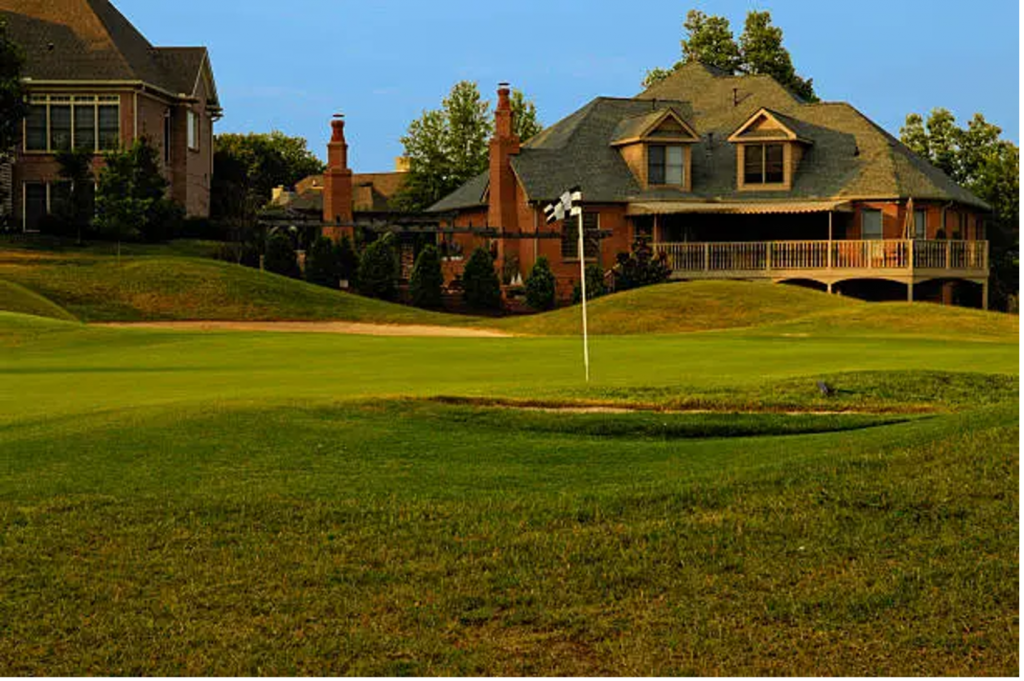By Danny Lynch, Staff Writer

Photo courtesy of pixabay.com
All around the United States, thousands of people attend or participate in recreational sports either by playing or spectating.[1] When we think of a relaxing afternoon, we may think of spending a few hours on a golf course, attending a baseball game, or going to a hockey game. In each of these sports, it is quite common for the ball or puck to leave the boundaries of the playing field. That is why there are marked areas in golf for spectators to stand behind, netting surrounding home plate, and glass above the boards of hockey rinks.[2] Recreational golfers most likely have hit an errant shot; everybody has. Those golfers may have even had to scream “Fore!” While there are some situations where the person hitting the ball is responsible for damages to another person, it is generally accepted that the no-duty rule applies.[3] Participants in golf assume the risk that injuries are common, frequent, or expected in the game. [4] However, if evidence shows golfers were taking an unreasonable risk that created an opportunity for harm, they will likely be liable for the damages the errant shot caused.
While stray golf shots come from individual actions that the golfer committed, who, if anyone, is responsible for a foul ball at a baseball game that strikes a spectator? The answer to that question has been coined “The Baseball Rule,”[5] where most tickets will have fine print on the back limiting all liability of the owners and players. The argument is typically made that the attendee assumed all risk when they purchased the ticket. In Neinstein v. Los Angeles Dodgers, Inc., a woman was struck by a batted ball while sitting on the first base line.[6] There was no protective netting in the area where she was sitting because it was common for players to reach into the stands to make a play on the ball. The court held that while there was no netting to protect her, by ruling in favor of the plaintiff it would change the game of baseball. Too much netting would diminish the quality of view for participants, and it would change the nature of the game itself.[7] Additionally, if someone is not paying attention and a foul ball strikes them far up the right field line, then that fan is most likely not going to be able to recover damages from the owner of the field or the players. However, if a situation arises where the safety protocols in place are not up to a reasonable standard, the injured attendee may be able to bring a claim against the owner of the stadium or arena. For example, if a wild pitch passes through a hole in the home plate netting and strikes a fan, that fan would be able to bring a claim. That is because it is not reasonable to have holes in the home plate netting that would allow a ball to pass through.[8]
What about in other sports where parts of the game enter the stands? A few years after Neinstein, the “The Baseball Rule” was applied to hockey. In Nemarnik v. The Los Angeles Kings, a woman was struck by a puck during pre-game warmups.[9] Nemarnik argued that her view was blocked from the oncoming puck because of the ushers’ negligence to not move the crowd in an organized manner. The court held that “obstructions of view caused by the unpredictable movements of other fans [were] an inherent and unavoidable part of attending a sporting event.”[10] Therefore, there was no responsibility to the owners of the arena, or the team for the injuries sustained by the spectators. The assumption of risk that fans take when they attend a sporting event includes this and other unfortunate situations.[11]
Overall, the law is unlikely to change in the future. Many courts have adopted the so-called “Baseball Rule” for many years.[12] As long as stadiums provide adequate netting and safety protocols, there will likely be no liability on the owners or players. Hockey arenas have glass and netting to protect spectators in most situations, however, potential anomalies may occur. Event attendees likely have noticed varying changes in safety protocols over recent years. To maintain spectator safety it is best to limit surrounding distractions, and to keep all eyes on the ball.
[1] https://www.ustravel.org/system/files/media_root/document/2019_Sports-Travel_07.11.19.pdf
[2] https://www.borisnet.co.uk/the-top-uses-of-netting-in-sports/
[3] 42 Pa. Cons. Stat. Ann. § 7102 (LexisNexis, Lexis Advance through 2023 Regular Session Act 12; P.S. documents are current through 2023 Regular Session Act 12).
[4] Zeidman v. Fisher, 2009 PA Super 161, 980 A.2d 637.
[5] Colo. Rev. Stat. § 13-21-120 (Lexis Advance through all legislation from the 2023 Regular Session).
[6] Neinstein v. Los Angeles Dodgers, Inc., 185 Cal.App.3d 176 (1986).
[7] Id. at 180-81.
[8] Summer J. v. United States Baseball Fed’n, 45 Cal. App. 5th 261, 258 Cal. Rptr. 3d 615 (2020)
[9] Nemarnik v. The Los Angeles Kings Hockey Club, L.P., 103 Cal.App.4th 631, 127 Cal.Rptr.2d 10 (2002).
[10] Id. at 638-39.
[11] https://www.buckeyeaccidentattorneys.com/blog/who-is-held-responsible-for-injuries-at-a-sporting-event#:~:text=Sports%20fans%20(often%20inadvertently)%20assume,considered%20liable%20for%20your%20injury.
[12] https://sreidylaw.com/lawyer/2018/10/28/Litigation/Personal-Injury-and-the-Baseball-Rule_bl36035.htm